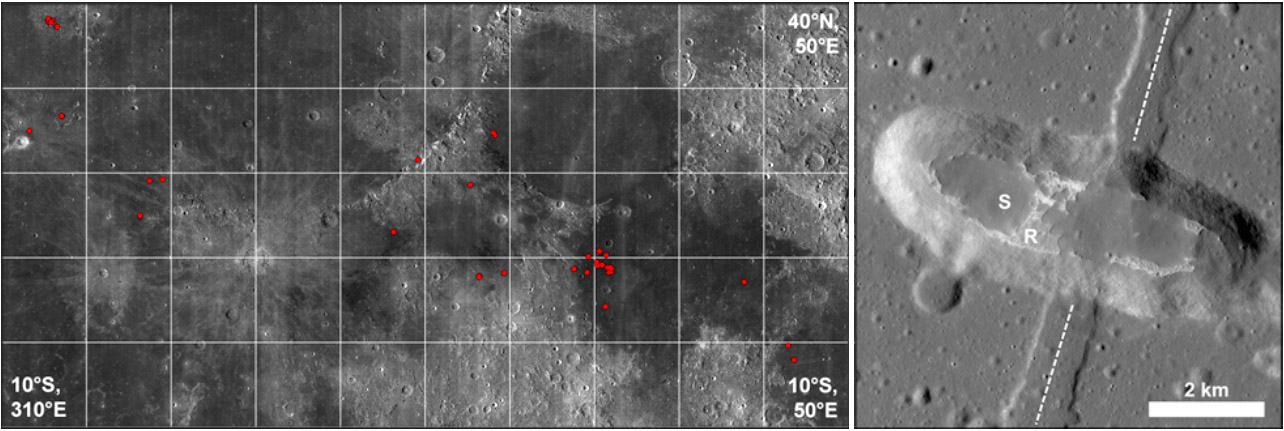February 2, 2013
Inites

image from " rel="nofollow S.E. Braden and others, LPSC 44
" rel="nofollow Ina is a remarkable small depression that is much younger than surrounding mare lavas.
It is considered to somehow be volcanic although the main thing that can be said with
certainty is that it occurs on volcanic terrains. Last year Phil Stooke discovered 27 similar
" rel="nofollow features in Lunar Reconnaissance Orbiter high resolution images, and at this year's Lunar
and Planetary Science Conference a " rel="nofollow paper by scientists from Arizona, Hawaii and Germany
identify many more and report crater counts derived ages. Red dots on the image map
pinpoint the locations of Ina-like (inites?) such as the one at right. This rimless trough near
Sosigenes (at 8.335°N, 19.071°) has smooth (S) and rough (R) material on its floor. These
materials have very few impact craters and an estimated age of 18 million years (Ma),
whereas the surrounding mare is 3.5 billion years old. There is a feeling (but little certainty)
that the smooth material is volcanic lavas and that volcanic degassing also occurs. Erupting
even tiny volumes of lava requires melting mantle rocks and somehow leaking the magma
to the surface. If these 50 plus inites shown here scattered across 3000 kilometers are all
volcanic then existing understanding of the thermal state of the lunar interior is wrong.
Alternatively, inites have a non-volcanic origin and there is some other formation process
that we are totally ignorant of.
" rel="nofollow Chuck Wood
Note: I don't know if these are the only locations of inites or if these are the only locations
that have been searched.
Related Links
Rükl plate 35
21st Century Atlas chart 12.



